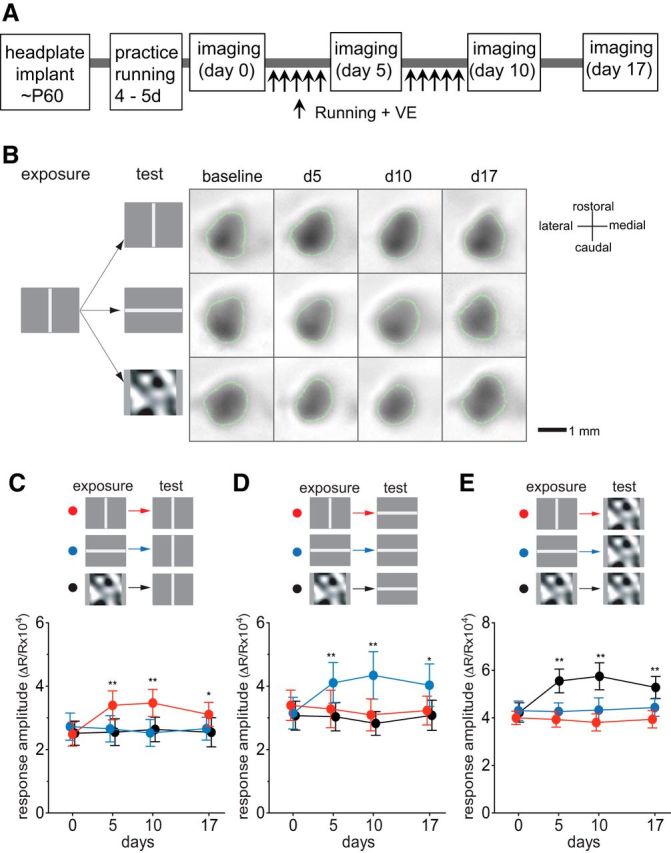Figure 1.

Preferential potentiation of visual cortical responses to the visual stimuli experienced during locomotion. A, Experimental schedule. During daily running from day 1 through day 10, mice were presented with either drifting vertical bars, drifting horizontal bars, or contrast-modulated noise, indicated as “exposure” in B–E. In every animal, visual cortical responses to all three visual stimuli were examined, indicated as “test” in B–E. B, Examples of intrinsic signals of a mouse that viewed drifting vertical bars during the daily running. Green lines encircling the response area indicate the ROIs from which response averages were calculated. C–E, Time course of change in intrinsic signal responses to drifting vertical bars (C), drifting horizontal bars (D), or contrast-modulated noise (E) in animals exposed to the vertical bars (red circles; n = 6), the horizontal bars (blue circles; n = 6), or the noise (black circles; n = 6). Each point in graphs represents mean ± SEM of six animals; at each time point, at least five measurements of the averaged response over the ROI were averaged for each animal. *p < 0.05; **p < 0.01 compared with the baseline (day 0) response (two-way ANOVA followed by multiple comparisons with Bonferroni's correction).
